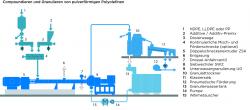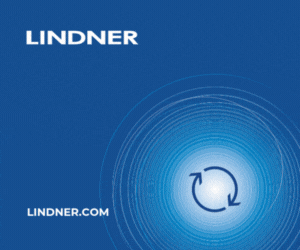plasticker-News
| 2011-02-23, 06:00 |

|
Coperion: Polyolefin extruders - Increased torque and new model ZSK 420
 Typical set-up of a system for the compounding and degassing of polyolefins; the new ZSK 420 achieves a target throughput of 90 tonnes/hour when compounding polypropylene. Diagram: Coperion, Stuttgart. ZSK MEGAcompounder: the advance to the 100 tonnes per hour barrier The increased specific torque of 12.5 Nm/cm³ extends the polyolefin compounding potential of the ZSK MEGAcompounder series considerably. In particular, it permits a further increase in what are the three most important criteria: maximum throughput, greatest possible efficiency and highest product quality. Production capacity will be as high as • 100 tonnes/hour for LLDPE and HDPE, • 90 tonnes/hour for PP and • 80 tonnes/hour for LDPE. Thus, the 100 tonnes per hour mark for polyolefin compounding is now well within reach. Moreover, the increased specific torque also permits a reduction in the energy required for the compounding process, as the more powerful drive increases the degree of fill in the screw flights and this in turn reduces the average shearing of the melt and the specific energy input. The specific energy costs go down, while the reduced temperature stress on the melt improves the product quality.  In the course of the last fifteen years the throughput rates of Coperion’s high capacity extruders for the compounding of polyolefins have increased two-and-a-half-fold for polyethylene and even three-fold for polypropylene. Graph: Coperion, Stuttgart. All Coperion compounding systems can be equipped with appropriate downstream units individually adapted to the requirements of the compounds: SWZ screen pack changers, MP melt pumps, UG underwater pelletizers and WRG waterring pelletizers. All of these units meet the same high performance and product quality demands as those met by the ZSK MEGAcompounder. An eye-catcher on Coperion’s booth B33 in Hall 14 will be the die plate of the world’s largest underwater pelletizer, the UG 1,250. With an average cutting diameter of 1,250 mm it holds up to 11,000 die holes. More information: www.coperion.com |
Coperion GmbH, Stuttgart, Germany
 back to news list back to news list |  back to top back to top |








